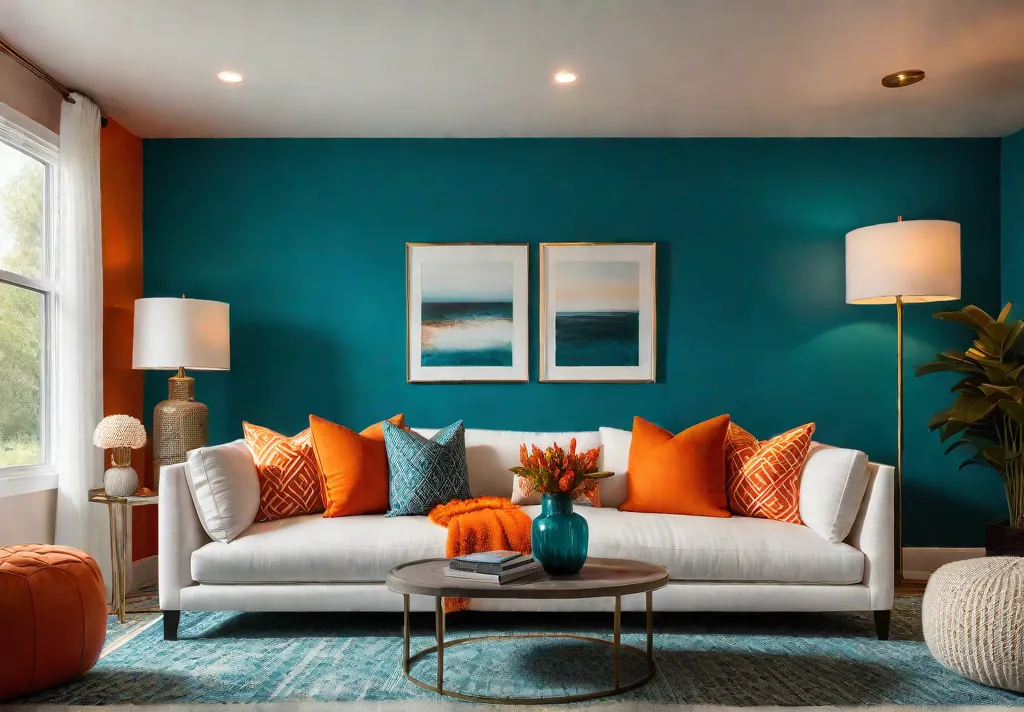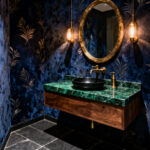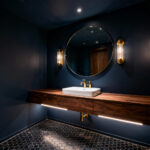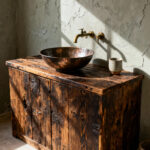Have you ever walked into a beautifully designed living room and felt an instant awe and inspiration? The colors, textures, and harmonious blend of elements all create an atmosphere that captivates the senses and lifts the spirit. As a designer, I’ve learned that color is one of the most powerful tools for crafting such transformative spaces.
For too long, the living room has been a bastion of beige—a safe, neutral haven that often lacks the vibrancy and personality we crave in our homes. But what if we dared break free from the confines of conventional wisdom and embrace the boundless possibilities of color? Imagine a living room that looks stunning, reflects your unique style, and ignites your creativity.
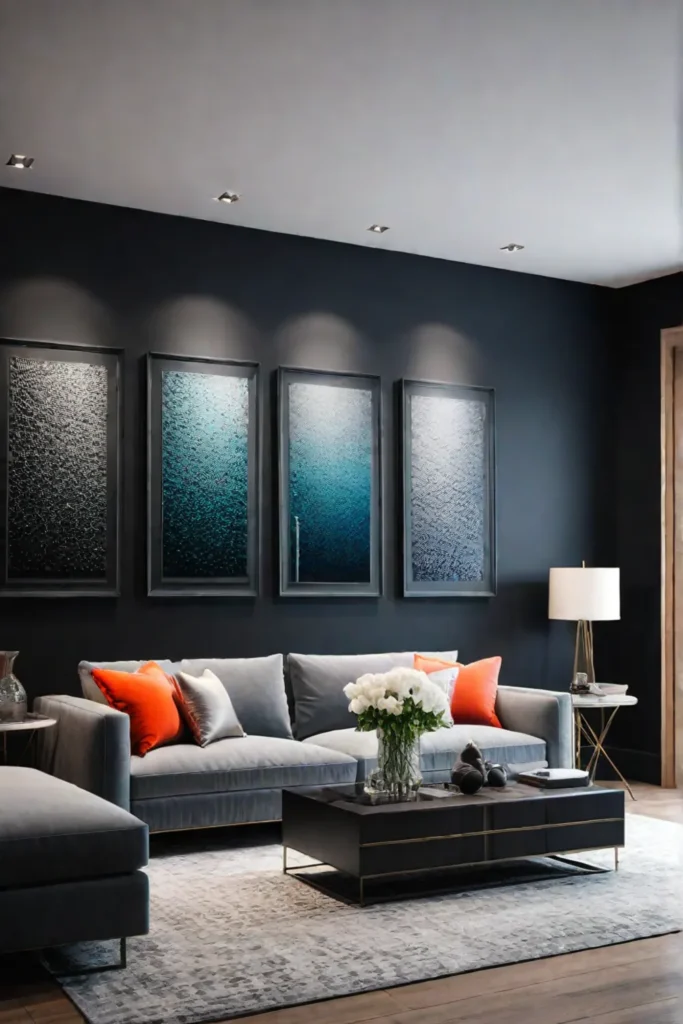
This article will explore seven unexpected color schemes that can breathe new life into your modern living room. From bold accent walls to daring complementary hues, we’ll delve into the art of color curation and uncover the secrets to creating a space that truly resonates with your soul. So, let’s embark on this vibrant journey together and unlock the full potential of your living room.
The Transformative Power of Bold Accent Walls
If you want to make a statement in your living room, an accent wall is the perfect canvas. By painting one wall in a bold, unexpected color, you can create a stunning focal point that instantly captivates the eye and sets the tone for the entire space.
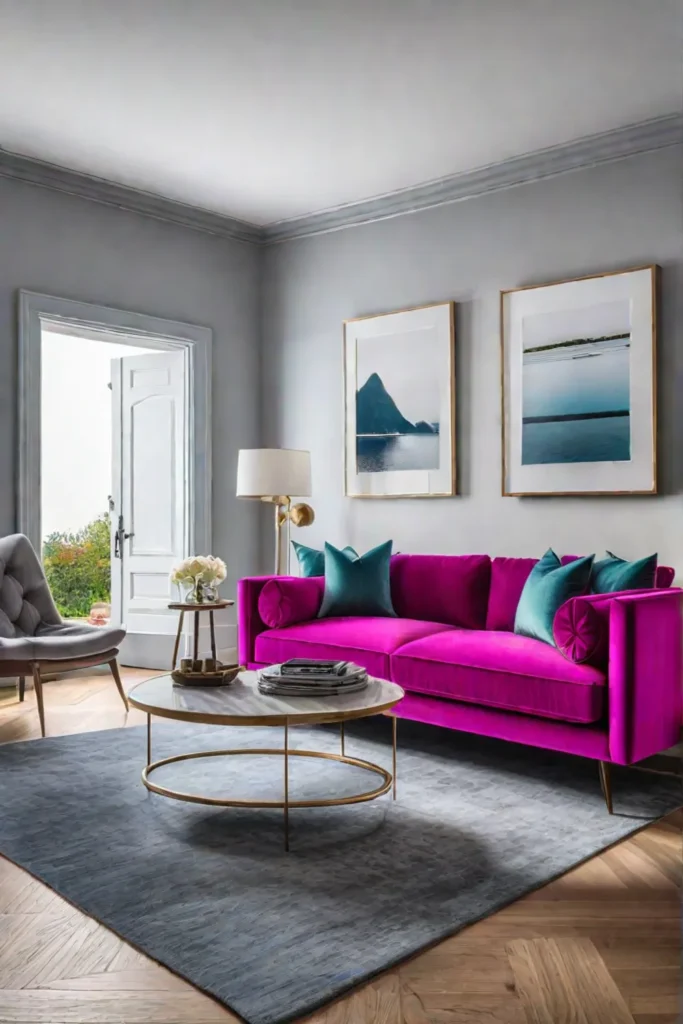
Take, for instance, a deep emerald green accent wall. This rich, jewel-toned hue exudes sophistication and depth, instantly elevating the room’s ambiance. Pair it with neutral furnishings and natural textures like wood and stone, and you’ve created a harmonious blend of modern elegance and organic warmth.
Or perhaps you’re drawn to the richness of a burgundy accent wall. This bold, earthy tone adds a touch of drama and luxury, making it an ideal choice for a living room that demands attention. Balance the intensity with creamy whites and metallic accents for a luxurious yet inviting atmosphere.
If daring, why not embrace the vibrant energy of a mustard-yellow accent wall? This sunny, cheerful hue will brighten up any space, inject a sense of playfulness and creativity. Temper the boldness with natural elements like rattan and jute for a bohemian-inspired vibe that’s both cozy and chic.
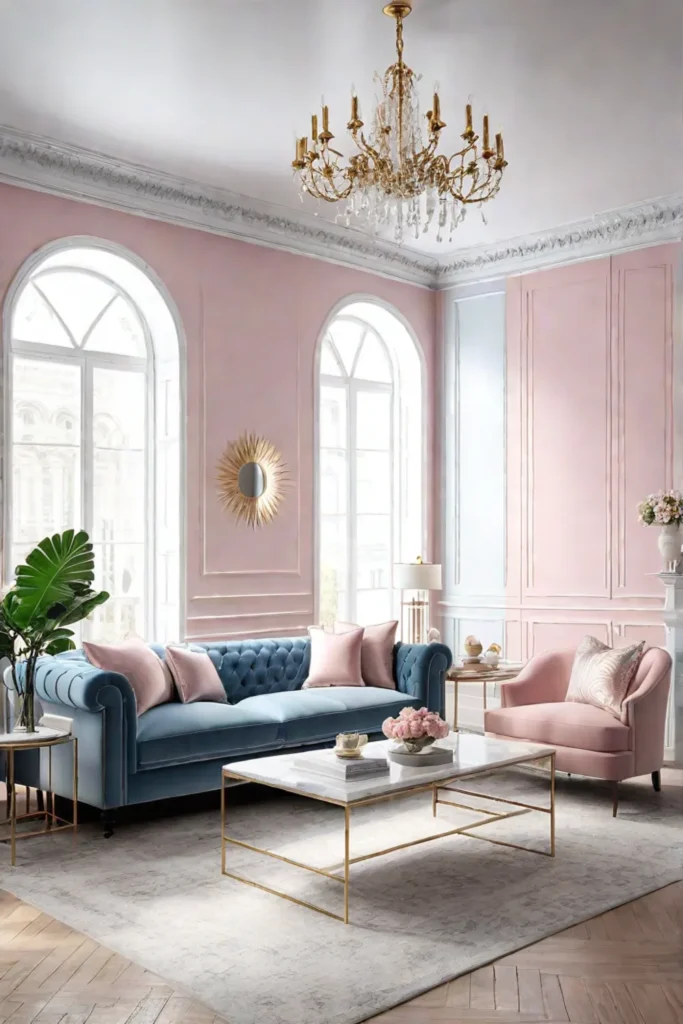
When it comes to accent walls, the key is to choose a color that resonates with your style and complements the overall design aesthetic of your living room. Don’t be afraid to experiment with textures and finishes, either – a distressed or hand-painted accent wall can add depth and character, transforming a simple wall into a true work of art.
Harmonious Contrast: Complementary Color Schemes
If you’re seeking a color scheme that truly pops, look no further than the complementary colors on the color wheel. These hues sit opposite each other and create a dynamic contrast that can breathe life and energy into any living room.
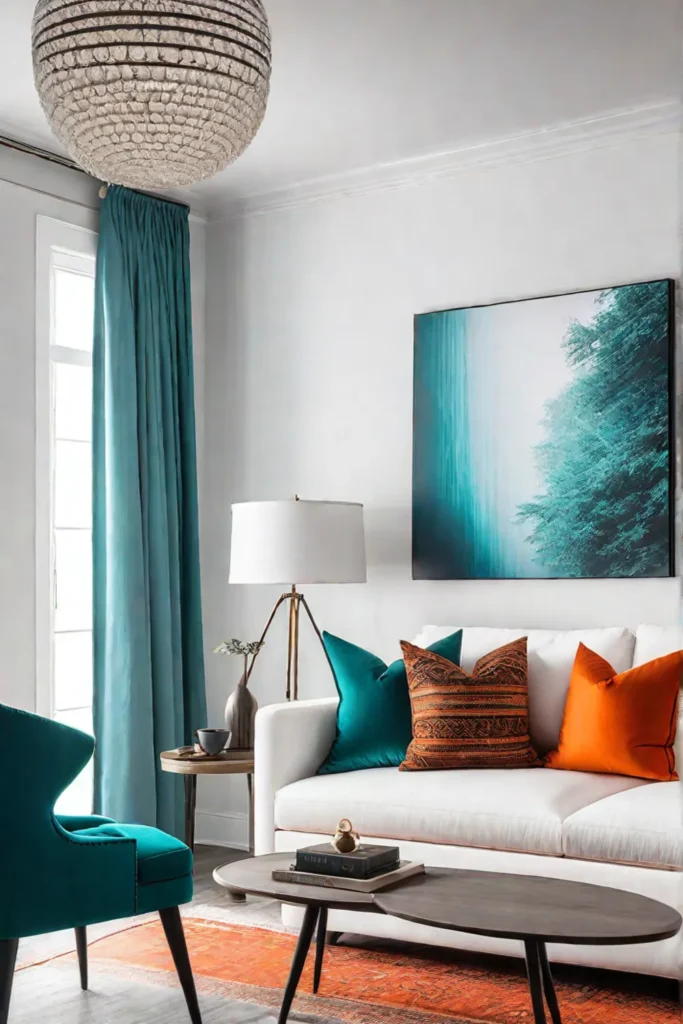
One classic complementary pairing is blue and orange. This combination exudes a sense of vibrancy and warmth, making it perfect for a living room with an energy boost. Incorporate shades of navy and terracotta through upholstery, rugs, and accent pieces for a bold and inviting look.
Consider a rich, jewel-toned pairing like amethyst purple and sunny yellow for a more daring approach. This unexpected combination will turn heads and create a focal point in your living room. Balance the intensity with neutral tones and metallic accents for a striking and sophisticated space.
If you’re drawn to the natural world, a complementary scheme of deep forest green and vibrant coral can be a stunning choice. This earthy yet energetic pairing evokes a sense of harmony with nature, making it an ideal choice for a living room that embraces biophilic design principles.

When working with complementary colors, it’s essential to balance bold and neutral tones. Use the bolder hues as accents and let the more subdued tones provide a calming backdrop. Incorporate textures and patterns to add depth and visual interest, and don’t be afraid to play with scale and proportion for a truly dynamic space.
Serene Sophistication: Monochromatic Palettes
A monochromatic color scheme can be a true oasis for those seeking a sense of tranquility and cohesion in their living room. By working with various shades and tones of a single hue, you can create a space that exudes calm and sophistication.

Consider, for instance, a living room awash in shades of cool blue. From the sofa’s deep navy to the accent pillows’ soft cerulean, this serene palette can transport you to a tranquil seaside retreat. Incorporate different textures like plush velvet and crisp linen to add depth and interest, and let natural light play off the various tones for a truly ethereal effect.
If you prefer a warmer aesthetic, a monochromatic palette of earthy greens can create a sense of organic harmony in your living room. From the rich olive of the accent wall to the soft sage of the upholstery, this nature-inspired scheme is grounding and rejuvenating. Incorporate natural elements like rattan and jute for added texture and bohemian flair.
For those who appreciate the timeless elegance of neutrals, a monochromatic scheme of various grays can be a stunning choice. From the charcoal of the feature wall to the soft pewter of the area rug, this sophisticated palette exudes a sense of understated luxury. Incorporate metallic accents and plush fabrics for a touch of glamour and warmth.
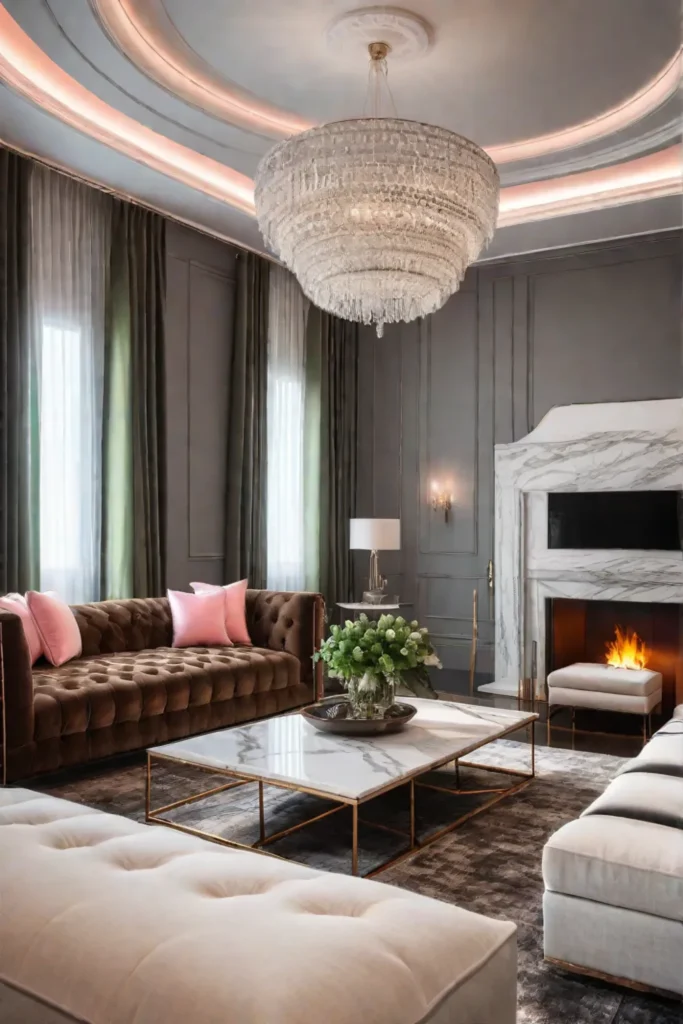
When working with a monochromatic palette, playing with different textures, finishes, and lighting is essential to create depth and visual interest. Experiment with layering various shades and tones, and don’t be afraid to incorporate pops of complementary colors through artwork or accent pieces for a touch of contrast.
Textural Intrigue: Elevating Your Color Scheme with Tactile Elements
While color is undoubtedly a powerful design tool, the combination of hues and textures truly brings a living room to life. By incorporating tactile elements like velvet, brushed metal, and natural stone, you can add depth and visual interest to your color scheme, creating a space that’s as inviting as it is visually striking.
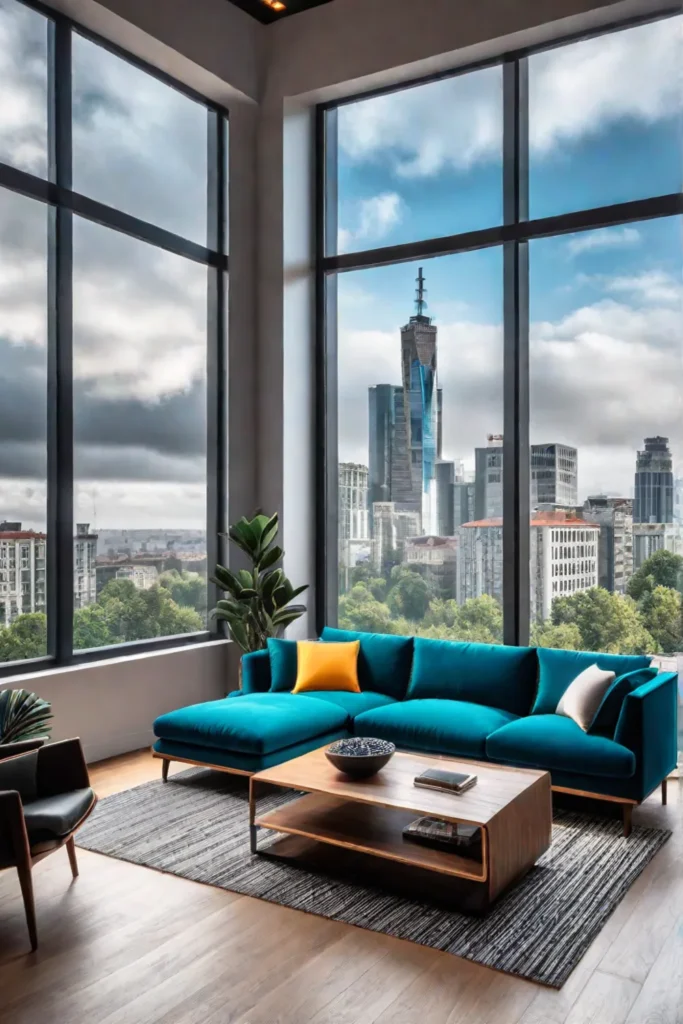
Imagine a living room in which the rich, jewel-toned velvet sofa takes center stage, complemented by the warmth of a brushed brass coffee table and the organic texture of a natural stone accent wall. This harmonious blend of luxurious fabrics, metallic accents, and raw materials creates an opulent and grounding sensory experience.
Or perhaps you’re drawn to the rustic charm of a living room featuring a plush, oatmeal-hued bouclé sofa paired with a distressed wood coffee table and a textured, slate-gray accent wall. This combination of cozy textures and earthy tones evokes a sense of comfort and warmth, making it the perfect retreat for relaxation and rejuvenation.
When incorporating textured finishes into your living room, the key is to balance smooth and rough surfaces, creating a dynamic interplay of textures that captivates the eye and invites touch. Don’t be afraid to mix and match different materials – the contrast between sleek metal and nubby wool, for instance, can add an unexpected layer of visual interest.
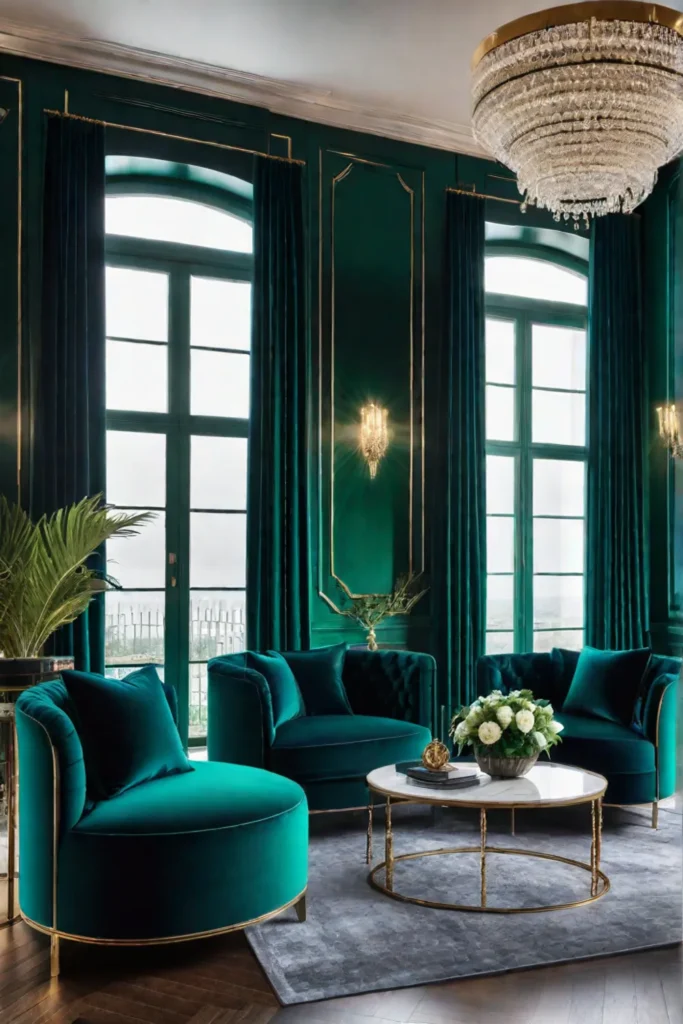
Remember, texture is not just about the materials themselves but also about the way light interacts with them. Play with different lighting sources and angles to create depth and dimension, highlighting each tactile element’s intricate details and nuances.
The Psychology of Color: Crafting the Perfect Mood
While color schemes can undoubtedly enhance the aesthetic appeal of a living room, their impact goes far beyond mere visual appeal. The hues we surround ourselves with can influence our emotions, energy levels, and overall well-being – a phenomenon known as color psychology.
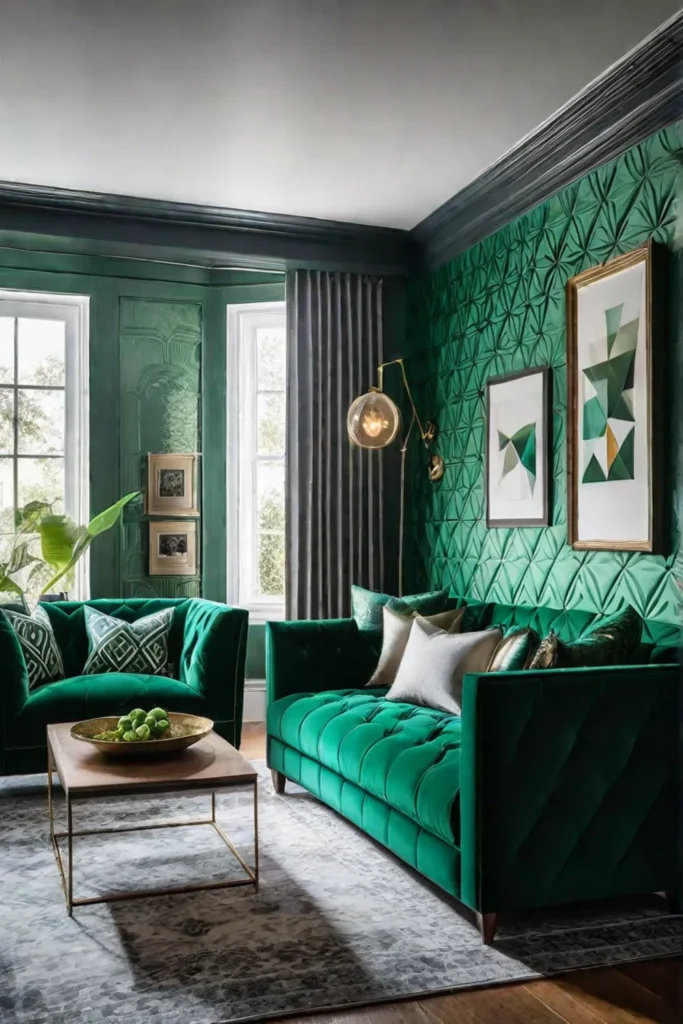
Cool tones like blue and green are often associated with calm and tranquility, making them ideal for creating a serene and relaxing living space. Incorporate these hues through upholstery, wall colors, and accent pieces for a space that promotes rest and rejuvenation.
Warm tones like red and orange, on the other hand, can evoke feelings of energy and excitement. These bold hues can be particularly effective in creating a lively and inviting atmosphere, perfect for entertaining or simply infusing your living room with vibrancy and joy.
Neutrals like beige and gray are often viewed as calming and grounding, but they can also feel cold and uninviting if not balanced with the right accents. Consider incorporating warm wood tones, cozy textures, and pops of color to create a serene and welcoming space.

When selecting a color scheme for your living room, consider not just the aesthetic appeal but also the emotional impact you wish to create. Do you crave a space that promotes relaxation and rejuvenation, or do you prefer an energizing environment that sparks creativity and socializing? By understanding the psychology of color, you can craft a living room that looks beautiful and supports your overall well-being.
Layered Intrigue: Mixing Patterns and Textures
Mixing patterns and textures can be a true art form for those who crave a living room that exudes depth and visual interest. By combining different prints, fabrics, and materials, you can create a dynamic, engaging space that captivates the eye and ignites the senses.
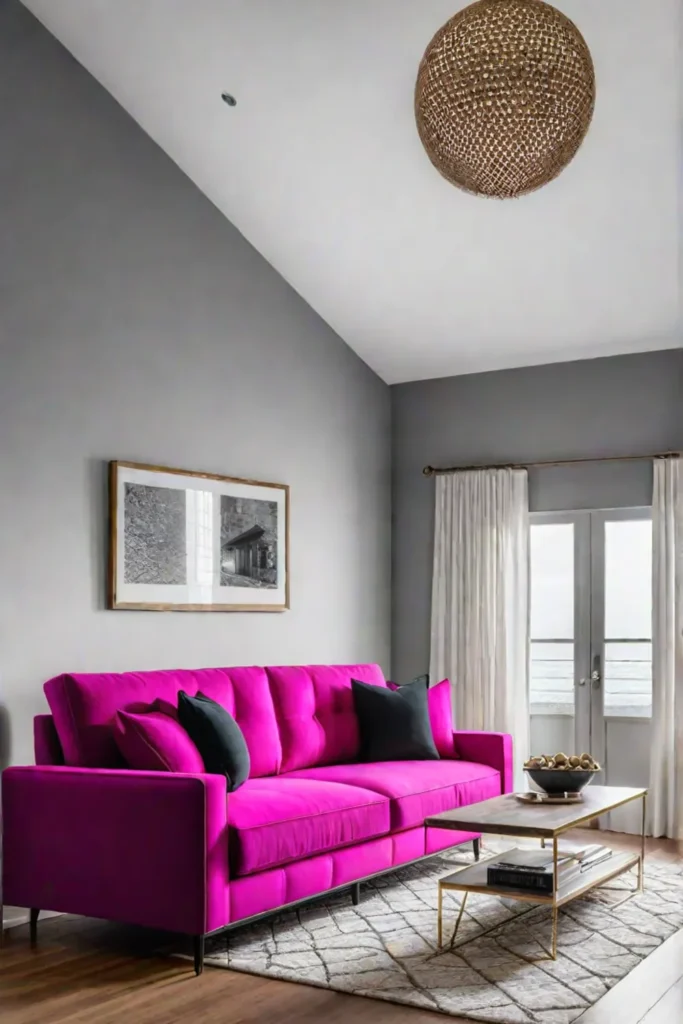
Imagine a living room with a bold, geometric area rug as the foundation, complemented by a floral-patterned sofa and a textured, nubby throw blanket. This harmonious blend of patterns and textures creates a sense of movement and energy while maintaining a cohesive and inviting atmosphere.
Or perhaps you’re drawn to the rustic charm of a living room featuring a striped jute rug paired with a plush, tufted velvet sofa and a chunky knit throw pillow. This combination of natural and luxurious textures evokes a sense of warmth and comfort, making it the perfect retreat for cozy evenings by the fire.
When mixing patterns and textures, striking the right balance between contrast and cohesion is essential. Look for complementary color palettes or recurring motifs that tie the elements together, creating a sense of harmony amidst the visual diversity.
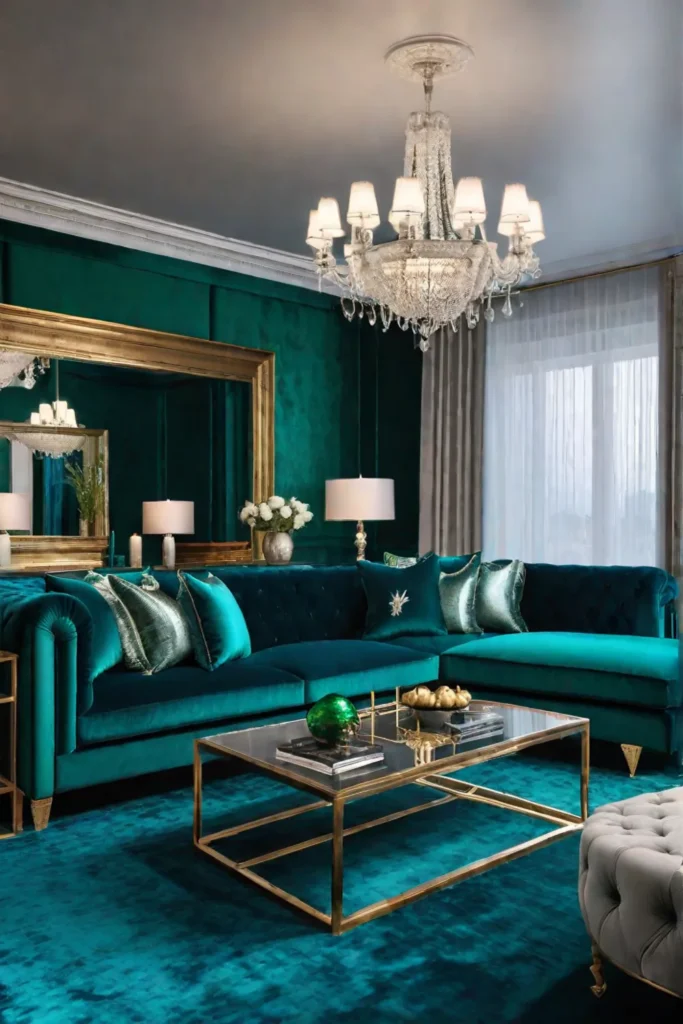
Don’t be afraid to play with scale and proportion, either. A large-scale floral print can be beautifully balanced by a small-scale geometric pattern, creating a dynamic interplay of shapes and sizes that keeps the eye engaged.
Remember, approaching it with playfulness and creativity is key to successful pattern mixing. Experiment with different combinations, and don’t be afraid to take risks—after all, a truly remarkable living room defies convention and celebrates your unique style.
Unconventional Hues: Embracing the Unexpected
While classic color combinations have their place, the most striking living rooms sometimes embrace the unexpected. By experimenting with unconventional hues and daring pairings, you can create a space that truly stands out and reflects your bold, creative spirit.

Imagine a living room where deep, jewel-toned hues like amethyst and emerald take center stage, creating an opulent and inviting atmosphere. Temper the intensity with metallic accents and plush textures for a space that exudes glamour and sophistication.
Or perhaps you’re drawn to the unexpected pairing of earthy terracotta and vibrant neon accents. This bold combination of warm and cool tones creates a sense of energy and excitement, perfect for a living room that celebrates creativity and self-expression.
For those who appreciate a more whimsical aesthetic, a pastel color scheme accented with metallic finishes can be a delightful choice. Soft shades of lavender and mint create a dreamy, ethereal ambiance, while rose gold and brass touch glamour and warmth.
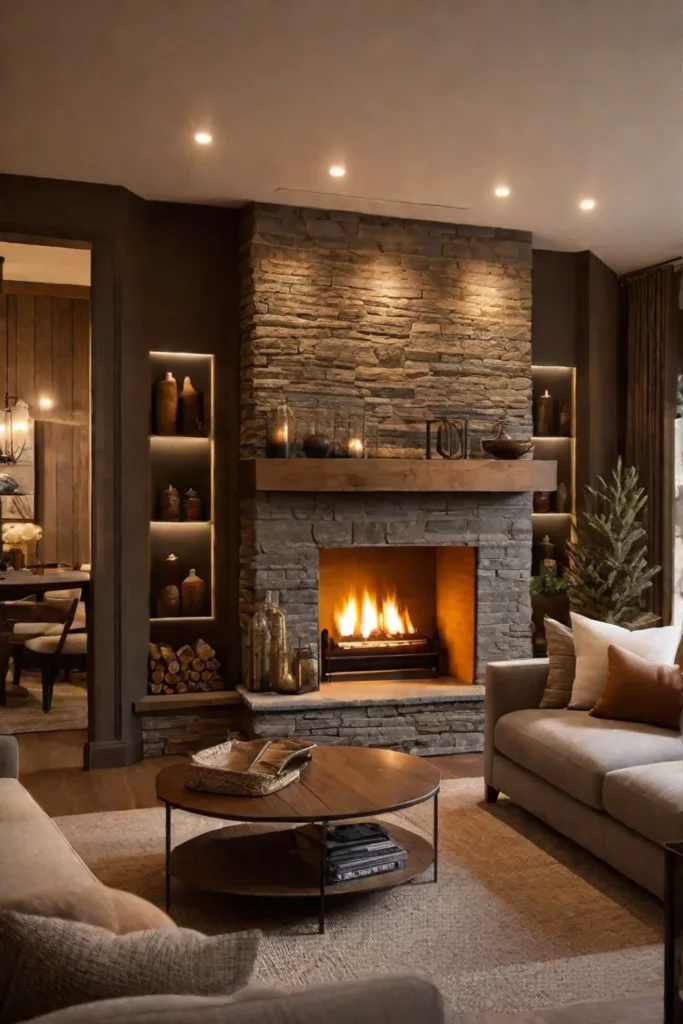
When embracing unconventional color schemes, the key is to approach it confidently and be willing to take risks. Don’t be afraid to push boundaries and challenge traditional notions of what a living room “should” look like. After all, the most remarkable spaces reflect their inhabitants’ unique personalities and perspectives.
Remember, even the boldest color combinations can be balanced and harmonized through the thoughtful use of textures, patterns, and neutral accents. Embrace the unexpected, but do so with a keen eye for cohesion and a deep understanding of how elements interact and complement one another.
Conclusion
In modern living room design, color is more than just a decorative element—it’s a powerful tool for self-expression, mood enhancement, and the creation of truly remarkable spaces. By embracing unexpected color schemes and stepping outside conventional wisdom, we can transform our living rooms into vibrant, engaging spaces that reflect our unique personalities and inspire creativity.
Whether you make a bold statement with a daring accent wall, embrace the harmony of complementary hues, or create a serene oasis with a monochromatic palette, the key is approaching color with a sense of adventure and a willingness to experiment. Incorporate tactile elements, play with patterns and textures, and let the psychology of color guide you in crafting the perfect mood for your living room.

Remember, a truly remarkable living space is one that not only looks beautiful but also resonates with your soul. It invites you to embrace your authentic self, let your creativity flow, and find joy in the simple act of being present. So, why settle for beige when you can embrace a world of vibrant possibilities?
Embrace the unexpected, embrace the bold, and embrace the power of color to transform your living room into a space that truly reflects the essence of who you are. After all, life is too short to live in a world of neutrals – it’s time to let your colors shine.
